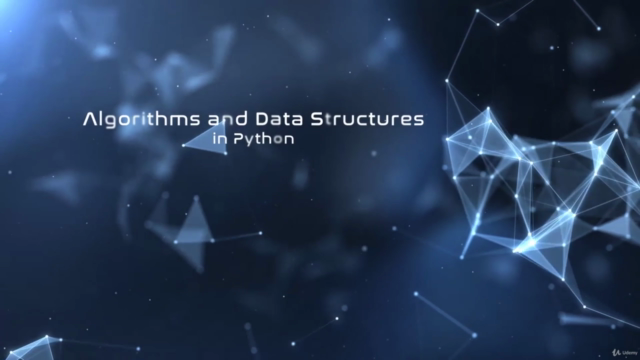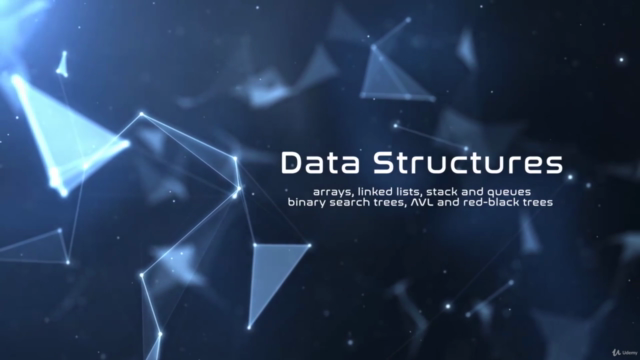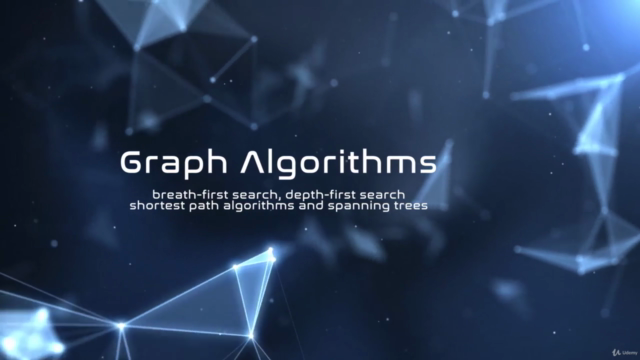Algorithms and Data Structures in Python (INTERVIEW Q&A)

Why take this course?
🚀 Course Overview: "Algorithms and Data Structures in Python (INTERVIEW Q&A)"
🎓 What You'll Learn:
This comprehensive course dives into the world of data structures, algorithms, and graphs, with a focus on implementing them from scratch in Python. Here's a breakdown of what you can expect to master by the end of this journey:
🔹 Section 1: Setting Up Your Environment Get started by setting up your Python environment and understanding the differences between data structures and abstract data types.
🔹 Section 2: Arrays Explore the array data structure, tackle interview questions related to arrays, and understand how they function in programming scenarios.
🔹 Section 3: Linked Lists Learn about single, double, and circular linked lists, their implementations, and how to solve common interview problems involving linked lists.
🔹 Section 4: Stacks and Queues Discover the stack memory, heap memory, and the practical applications of stacks and queues in Python, complete with interview questions.
🔹 Section 5: Binary Search Trees Understand binary search trees, their operations like insertion, deletion, and searching, and explore advanced trees like AVL and red-black trees.
🔹 Section 6: Heaps</priority queue, heap sort, and how heaps are used in various Python applications.
🔹 Section 7: Graph Algorithms Dive into the world of graphs with an emphasis on spanning trees, shortest path algorithms (like Dijkstra's and A*), and graph traversal methods.
🔹 Section 8: Substring Search Algorithms Learn about string searching algorithms such as the Rabin-Karp method, Knuth-Morris-Pratt algorithm, and Z algorithm, and their Python implementations.
🔹 Section 9: Hamiltonian Cycles & Traveling Salesman Problem Explore Hamiltonian cycles, learn about the Traveling Salesman Problem, and solve it using backtracking and meta-heuristic approaches.
🔹 Section 10: Sorting Algorithms Master sorting algorithms like bubble, selection, insertion, quicksort, merge sort, counting sort, and radix sort with real Python code examples.
🔹 Section 11: Algorithms Analysis Understand how to measure the running time of algorithms, analyze their complexity with notations like O, Ω, and θ, explore complexity classes, and learn about different running time complexities.
🚀 Why This Matters:
Python is a staple in fields such as investment banking, artificial intelligence, and electronic trading on the stock market. A strong grasp of algorithms and data structures not only prepares you for technical interviews but also equips you with the tools to tackle complex problems across various domains.
👩💻 Who This Course Is For:
- Aspiring programmers looking to deepen their understanding of fundamental concepts.
- Developers preparing for technical interviews and looking to sharpen their problem-solving skills.
- Data scientists and engineers who want to leverage Python for data analysis, machine learning, or network modeling.
📅 Get Started Today!
Join us on this exciting learning journey and unlock the potential of algorithms and data structures in Python. Let's demystify complex problems together and empower your coding skills for real-world applications! 🌟
Course Gallery




Loading charts...
Comidoc Review
Our Verdict
Algorithms and Data Structures in Python (INTERVIEW Q&A) offers a comprehensive guide to understanding various algorithms and data structures, with high-quality visualizations and Python code examples. While the course's precision and technicality may be challenging for beginners, it excels in covering complex topics with clarity. However, some students might find a few uncorrected mistakes and suboptimal solutions, requiring further investigation for interview preparation. Despite these shortcomings, its thoroughness and real-world relevance make it a worthwhile learning resource.
What We Liked
- Comprehensive coverage of various algorithms and data structures, including arrays, linked lists, stacks, queues, trees, hashing, and sorting
- In-depth explanations of complex topics with a simple and clear approach
- High-quality visualizations of algorithms that aid understanding
- Comprehensive Python code samples with minimal issues or errors
- Relevant real-world applications and examples
Potential Drawbacks
- Technical and precise explanations that can be challenging for beginners
- Lack of accessibility in the initial videos for newcomers to programming
- Less optimal solutions presented, requiring additional research for interview preparation
- A few uncorrected mistakes in the course material
- Instructor's fast pace and accent may make it challenging for some learners